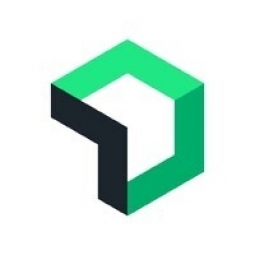适用行业
- 水泥
- 医疗保健和医院
用例
- 需求计划与预测
- 时间敏感网络
服务
- 系统集成
关于客户
HealthifyMe 于 2012 年在印度班加罗尔成立,是一款革命性的健康和健身应用程序,旨在利用人工智能和人类同理心的力量改变十亿人的生活。该应用程序正在改变人们保持健康、清洁饮食以及建立持久健康生活方式的方式。 HealthifyMe 拥有超过 3500 万次下载量和 1500 多名营养、健身和瑜伽教练,已在东南亚占据一席之地,并希望征服全球市场。它还拥有一个 B2B 部门,通过该部门与印度各地 100 多家公司建立联系,提供员工健康解决方案。
挑战
HealthifyMe 是一款总部位于印度的健康和健身应用程序,在管理其不断增长的用户群方面面临着重大挑战,特别是在排灯节、圣诞节和新年之后等高峰时期。该应用程序的下载量超过 3500 万次,拥有 1500 多名营养、健身和瑜伽教练,在此期间流量激增了两到三倍,造成了巨大的系统负载。此外,当政府针对印度 45 岁以下人群推出新冠疫苗接种计划时,该公司还面临着简化 COVID-19 疫苗接种预订的挑战。预订名额供不应求,团队需要构建一个功能可以让人们轻松找到附近的疫苗接种点。
解决方案
为了应对这些挑战,HealthifyMe 求助于软件分析公司 New Relic。借助 New Relic,HealthifyMe 能够创建基于实时数据的单一事实来源,这对于提高开发人员的工作效率和在开发人员中建立主人翁意识至关重要。该技术还帮助该公司确保峰值需求性能并增强系统弹性。因此,技术团队能够将更多时间花在开发新功能上,而不是花在救火上。除了支持 HealthifyMe 的 DevOps 团队转型之外,New Relic 还帮助打破团队孤岛并改进站点可靠性工程 (SRE) 功能。展望未来,HealthifyMe 计划通过其 DataPlus 产品(包括漏洞管理)利用 New Relic 的高级功能,从而完善其可观察性足迹。
运营影响
数量效益

Case Study missing?
Start adding your own!
Register with your work email and create a new case study profile for your business.
相关案例.

Case Study
System 800xA at Indian Cement Plants
Chettinad Cement recognized that further efficiencies could be achieved in its cement manufacturing process. It looked to investing in comprehensive operational and control technologies to manage and derive productivity and energy efficiency gains from the assets on Line 2, their second plant in India.

Case Study
Hospital Inventory Management
The hospital supply chain team is responsible for ensuring that the right medical supplies are readily available to clinicians when and where needed, and to do so in the most efficient manner possible. However, many of the systems and processes in use at the cancer center for supply chain management were not best suited to support these goals. Barcoding technology, a commonly used method for inventory management of medical supplies, is labor intensive, time consuming, does not provide real-time visibility into inventory levels and can be prone to error. Consequently, the lack of accurate and real-time visibility into inventory levels across multiple supply rooms in multiple hospital facilities creates additional inefficiency in the system causing over-ordering, hoarding, and wasted supplies. Other sources of waste and cost were also identified as candidates for improvement. Existing systems and processes did not provide adequate security for high-cost inventory within the hospital, which was another driver of cost. A lack of visibility into expiration dates for supplies resulted in supplies being wasted due to past expiry dates. Storage of supplies was also a key consideration given the location of the cancer center’s facilities in a dense urban setting, where space is always at a premium. In order to address the challenges outlined above, the hospital sought a solution that would provide real-time inventory information with high levels of accuracy, reduce the level of manual effort required and enable data driven decision making to ensure that the right supplies were readily available to clinicians in the right location at the right time.

Case Study
Gas Pipeline Monitoring System for Hospitals
This system integrator focuses on providing centralized gas pipeline monitoring systems for hospitals. The service they provide makes it possible for hospitals to reduce both maintenance and labor costs. Since hospitals may not have an existing network suitable for this type of system, GPRS communication provides an easy and ready-to-use solution for remote, distributed monitoring systems System Requirements - GPRS communication - Seamless connection with SCADA software - Simple, front-end control capability - Expandable I/O channels - Combine AI, DI, and DO channels

Case Study
Driving Digital Transformations for Vitro Diagnostic Medical Devices
Diagnostic devices play a vital role in helping to improve healthcare delivery. In fact, an estimated 60 percent of the world’s medical decisions are made with support from in vitrodiagnostics (IVD) solutions, such as those provided by Roche Diagnostics, an industry leader. As the demand for medical diagnostic services grows rapidly in hospitals and clinics across China, so does the market for IVD solutions. In addition, the typically high cost of these diagnostic devices means that comprehensive post-sales services are needed. Wanteed to improve three portions of thr IVD:1. Remotely monitor and manage IVD devices as fixed assets.2. Optimizing device availability with predictive maintenance.3. Recommending the best IVD solution for a customer’s needs.

Case Study
HaemoCloud Global Blood Management System
1) Deliver a connected digital product system to protect and increase the differentiated value of Haemonetics blood and plasma solutions. 2) Improve patient outcomes by increasing the efficiency of blood supply flows. 3) Navigate and satisfy a complex web of global regulatory compliance requirements. 4) Reduce costly and labor-intensive maintenance procedures.




